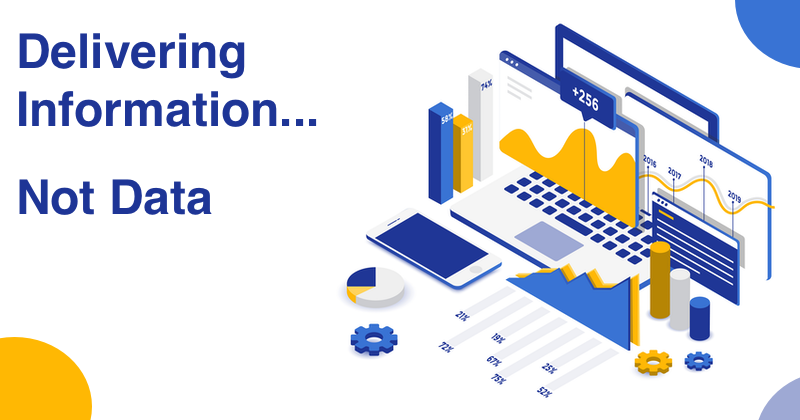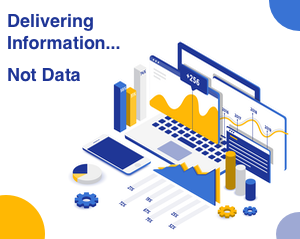As you might expect there are many different aspects to how the future of client reporting will evolve, especially when it comes to data and information. Hence this blog is split into multiple parts, each part looking at a different element of the future model.

This is the third blog of the series. In the first blog we noted that the existing systems and processes should be coping with the current requirements. It would not be possible or practical to extend and move client reporting into the future, if the current business as usual processes and systems can’t cope. The second blog noted that self-service is a key factor to enable the reporting team to produce and evolve the reports required by the clients, in the required timeframes. Recourse to other departments and conflicting priorities will slow the pace of change and dilute the effectiveness.
In part 3 of the blog, we look at report content and specifically consider ‘data vs information’.
In this context I am considering “data” as raw numbers displayed in a particular format, whether it be in a table, graph or some other format. “Information” is data that has been processed to provide relevance and meaning.
In order to evolve reporting it is important that the content of the report is doing its job – that is to communicate certain messages and details to the relevant audiences. There’s a couple of key points to note here;
- Audiences may have differing requirements of each report
- Audiences may have different levels of understanding and therefore want different levels of explanation within the report
As reports progress in to the future, they need to evolve from simply providing data to providing valuable information, and information relevant to the particular audience. Specifically, this means:
- Data must be processed and displayed in a manner that is meaningful, helpful and valuable to the reader, perhaps by the greater use of graphics, images and supported by commentary and written explanation
- The information provided should be linked to the purpose or objectives of the fund or client
- The report and information contained within the report should be consistent over time, so that the readers of the report gain familiarity and understanding of the report, and how it is laid out and presented
- Investment firms should consider producing multiple reports for multiple audiences, depending on the level of detail and complexity suitable to each audience. This may take the form of “extended” and “standard” factsheets, for example. With the extended factsheet containing more detailed analytical data and information, further explanation and commentary than the standard factsheet or report
- Consistency, there must be absolute consistency between the reports and each report should reference the other, so that all recipients of the reports can view either or both
The reporting system and reporting team should be able to easily cope with the above requirements and increased volumes, with the system simply able to create additional reports for the extended and standard reports. Of course, it goes without saying, but I will anyway, that the reports should be specific to the particular investment or investments that the reader has (so no more general fund level factsheets – shareclass level only please) and be produced in all languages for all regions as marketed and required. Finally, the reports should be produced on a frequency that means they are not out of date when they arrive and are delivered in a manner and timeframe acceptable to the recipient.
Sounds easy… well it is with a modern flexible reporting system, but surprisingly difficult with an old legacy or tool kit type solution that requires teams of people to amend and enhance.
Continue to Part 4.
Andrew Sherlock
Opus Nebula

